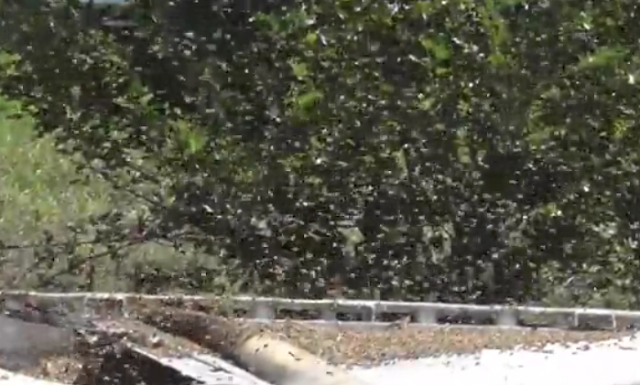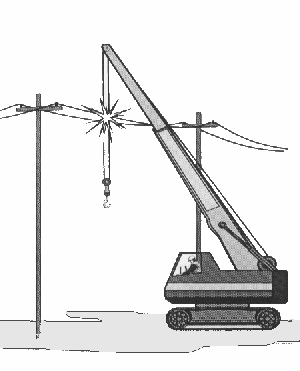Updated 1 hr 46 mins ago
KANSAS CITY, Mo. -- Drivers along an interstate north of Kansas City were told to be on the lookout for an unusual traffic hazard after a semi-trailer truck loaded with honeybees overturned.
The Missouri Department of Transportation said the accident occurred Friday on Interstate 435. No serious injuries were reported.
The Transportation Department initially said the truck was carrying about 40,000 bees.
But the Kansas City Star reports bee experts said between 8 million and 11 million bees were in the truck. Some of the bees flew away from the accident scene.
Matt Winstead, of Midwest Bee Removal, says hives typically contain about 40,000 bees. The owner of the hives, Brian Buoye said about 408 hives were being transported.
=============
Northland is abuzz after semi carrying millions of bees overturns
A truck carrying hives of honeybees on its way to Tampa, Fla., overturned on Friday, September 2, 2016, at Interstate 435 and Interstate 35 in Clay County. Workers with Midwest Bee Removal were stuck with the job of transferring the bees to another truck. Keith Myers kmyers@kcstar.com
By Katy Bergen
The Missouri Department of Transportation reported shortly after noon Friday that a semi-truck carrying millions of honey bees had overturned on the right shoulder of southbound Interstate 435 near the Interstate 35 intersection in the Northland.
An emergency response team from the department, as well as Kansas City police, responded to the scene and called local bee companies to help control and gather the insects. Authorities said at least some of the bees had flown away from the semi.
MoDOT originally reported that the truck had been carrying 40,000 bees. A local bee expert called to the scene to help, as well as the owner of the bees, said the number was in the millions.
Hives typically contain 40,000 bees, said Matt Winstead of Midwest Bee Removal.
Owner Brian Buoye said that 408 hives were being transported. Both men estimated the number of transported bees to be between 8 million and 11 million.
MoDOT officials said they had been initially informed that the truck contained 40,000 bees and could not immediately clarify the number of bees being transported. The truck was reportedly traveling from North Dakota to Tampa, Fla.
The semi-truck was off the road and not directly affecting traffic, police said, though several tow trucks on the highway’s right shoulder were utilized to clear the scene.
“#Beesafe,” MoDOT tweeted, suggesting that drivers use caution in the area.









































